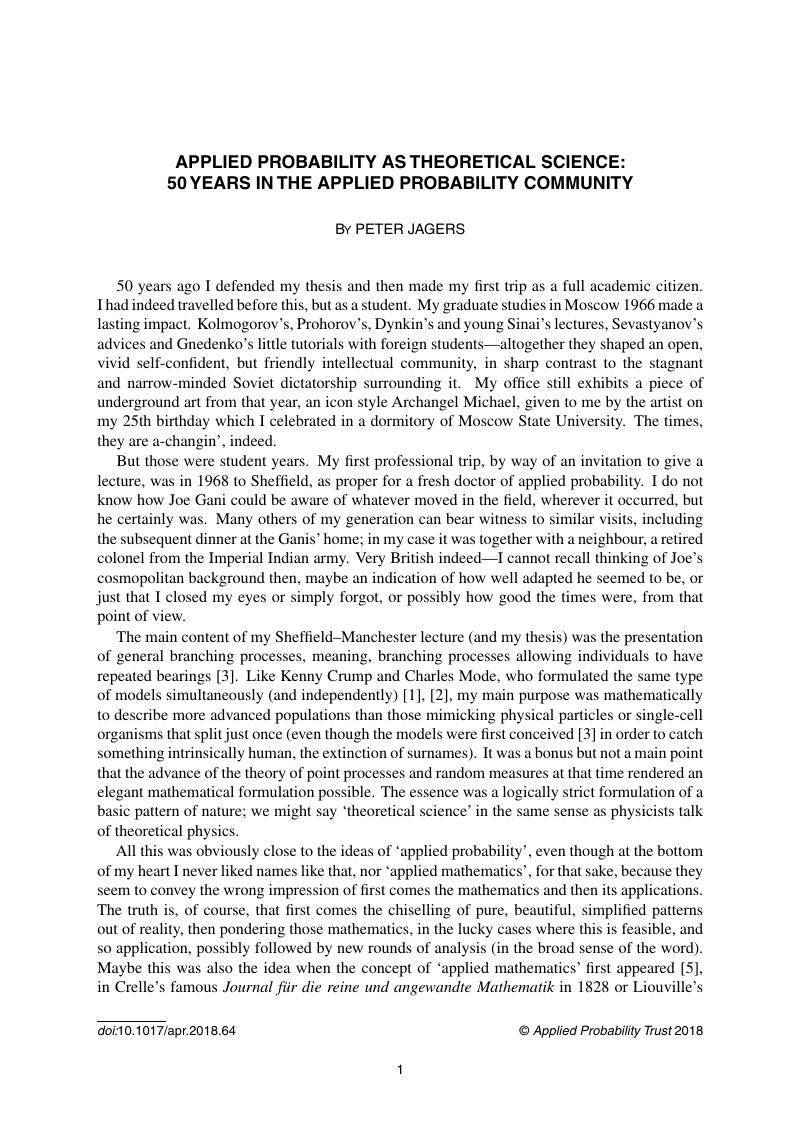[5]Kingman, J. F. C. (
2014).
Applied probability before 1964, and after 2014. In
Celebrating 50 Years of The Applied Probability Trust (J. Appl. Prob. Spec. Vol.
51A), eds S. Asmussen, P. Jagers, I. Molchanov and L. C. G. Rogers,
Applied Probability Trust,
Sheffield, pp.
5–
9.
Google Scholar 